When shippers look at their next freight bill, costs may be higher than normal – or the relative normal of late, characterized by already high and plentiful surcharges. That’s because FedEx and UPS have announced this year’s peak season surcharges, and they may already be affecting your invoices. Let’s dive into the effects of this year’s peak surcharges, which are focused on residential deliveries and large packages, and look at ways shippers can save.
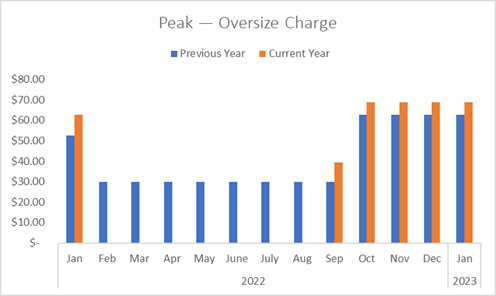
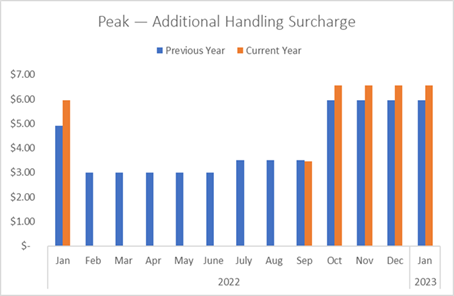
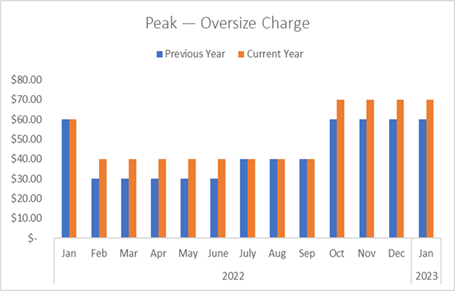
UPS
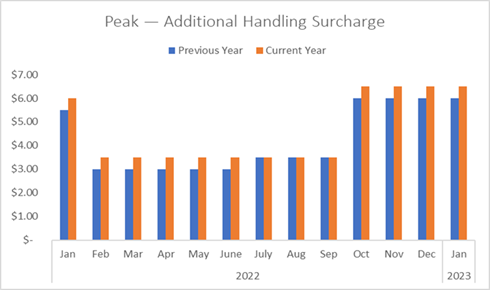
How much longer is this peak season?
If it feels like you’re dealing with elevated costs for longer than usual, it might be more than a feeling. In 2018, peak season lasted 35 and 34 days for FedEx and UPS. By the time peak season ends in January 2023, some of the surcharges will have lasted a year.
The peak surcharges for additional handling and oversize packages have been in place since January for UPS and started on Sept. 5 for FedEx. The peak season has increased dramatically in the past few years.
How are the surcharges different from last year?
Last year, peak residential delivery surcharges from both major carriers applied to customers who shipped more than 25,000 residential and ground economy packages per week. This year, that threshold has decreased to 20,000 packages per week, so more shippers should expect to pay these surcharges.
The way that these surcharges are applied has also changed. Whereas last peak season, FedEx calculated the peaking factor by dividing the weekly average for packages shipped in early October 2021 by the weekly average packages shipped in February 2020, this year they will instead join UPS in the practice of calculating the peaking factor weekly. FedEx then uses the peaking factor to determine the surcharge amount applied two weeks later, resulting in a more dynamic peak residential surcharge than in the past. These surcharges will range from $1.25 to $6.00 for Ground and from $2.25 to $7.00 for Express. The UPS peak/demand residential surcharge, which varies based on each shipper’s peaking factor, will be applied to shippers exceeding 105% of their baseline volume — the average weekly volume for the applicable services from June 5 to July 2, 2022.
The UPS peak/demand residential surcharge also has more tiers and is more expensive than last year’s edition. Their additional handling surcharge increased 8% per package, and their large packages surcharge increased 17%. Their over maximum limits surcharge, covering packages that weigh more than 150 pounds, packages exceeding 108 inches or a total of 165 inches in length plus girth, increased by a whopping 60%. Shippers using FedEx will also see significant, albeit more consistent, increases – peak additional handling, peak oversize and peak unauthorized surcharges all increased by 10% when compared to 2021.

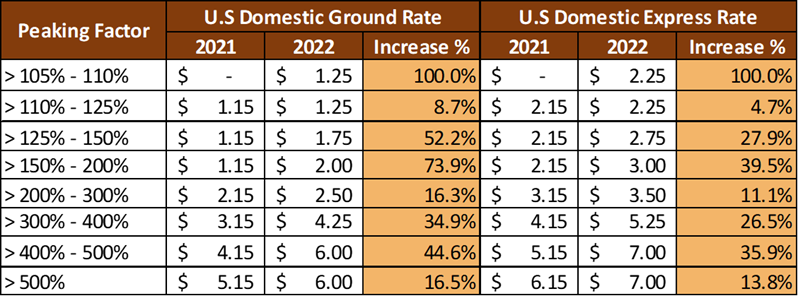
How can shippers save?
These more stringent surcharges and changes to the baseline make it more difficult for shippers to accurately budget parcel spend over the coming months. But shippers can still take action to contain costs – and in this market, every dollar matters.
• Reduce dimensional/weight-related surcharges. Meticulously collect and document the parcel dimensions, weight and packaging for every one of your shipments so that you can change packaging and shipping options to stay outside of the surcharge parameters.
• Conduct a pre- and post-audit. A pre-audit can help uncover incorrectly billed rates, accessorials, fuel, and duty and taxes before your invoice is due, while a post-audit helps identify any mischarges after the fact and allow you to recover improper shipping costs. Together, the processes ensure you don’t pay more than you should.
• Make sure you’re up to date. It may sound simple, but it’s crucial to make sure you’re up to date on industry trends and how they affect your carrier agreements. For example, last year, delivery area surcharges went from flat to zonal fees. Depending on where your parcels are headed, that could make things costly. Use that information and your bills to evaluate your logistics network for changes that could produce savings.
The complexity of ever-changing surcharges and nuanced contracts makes it more difficult for shippers to keep transportation costs in check, but a proven resource can help you identify and capitalize on every available cost-saving opportunity.
Micheal McDonagh is President, Parcel, AFS Logistics.















